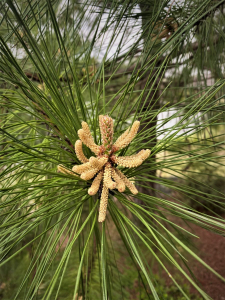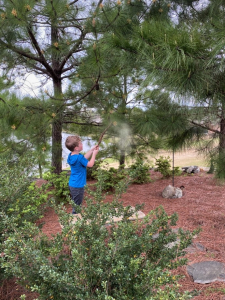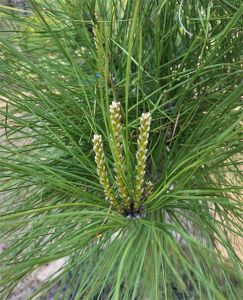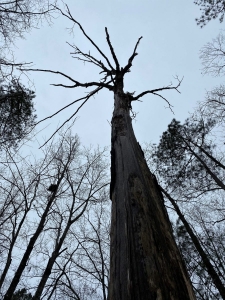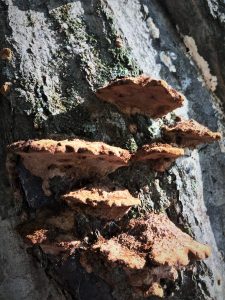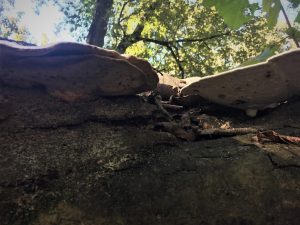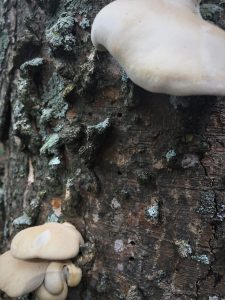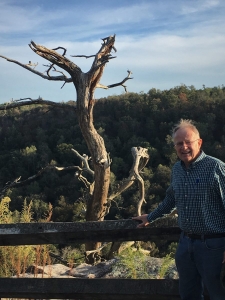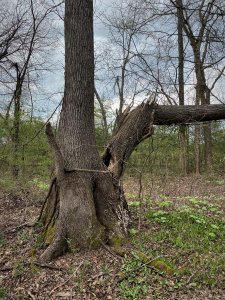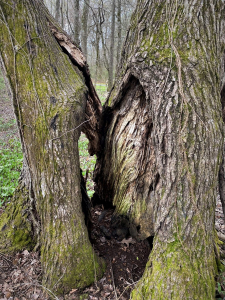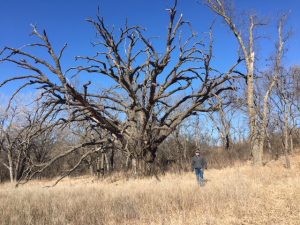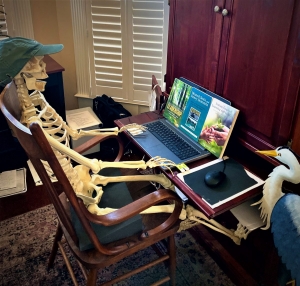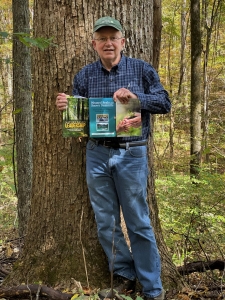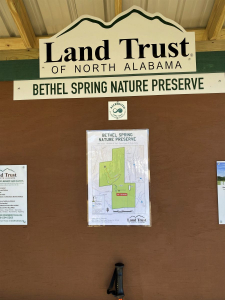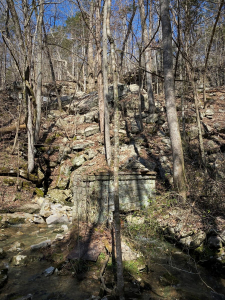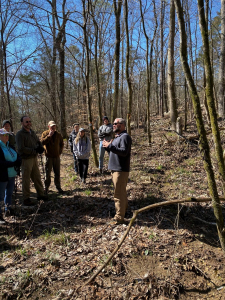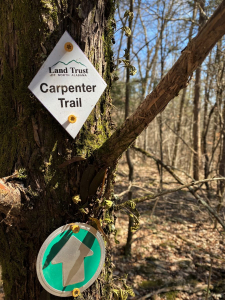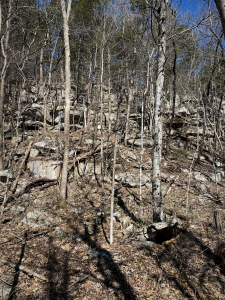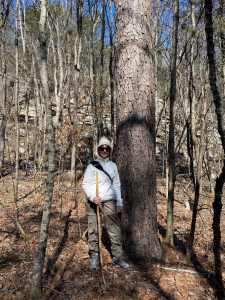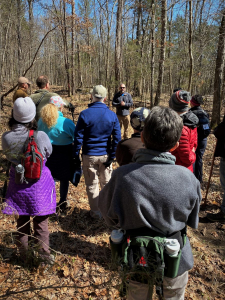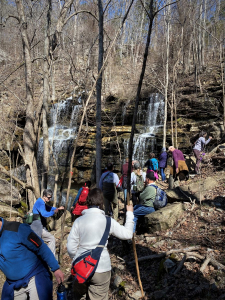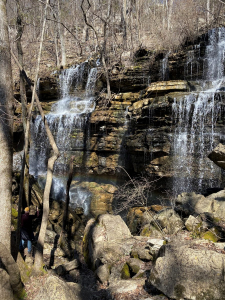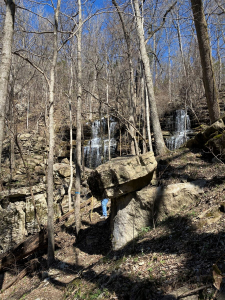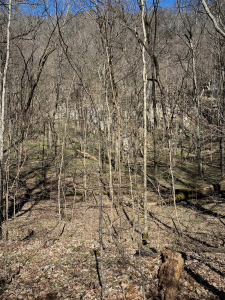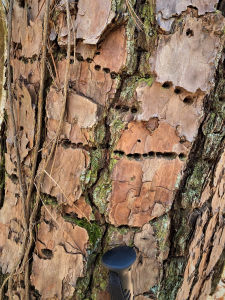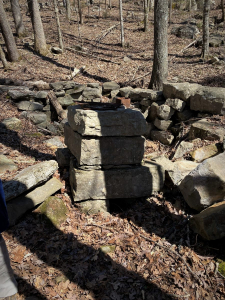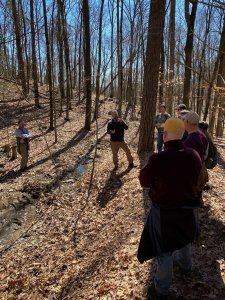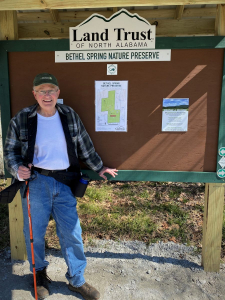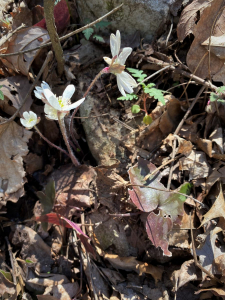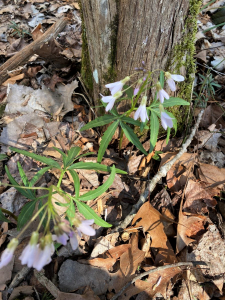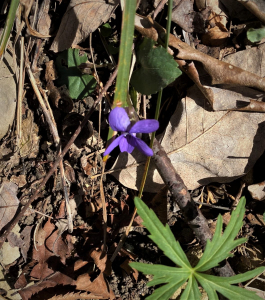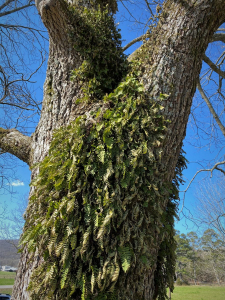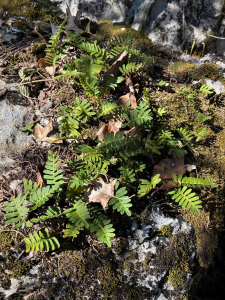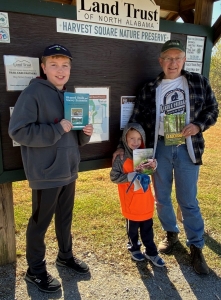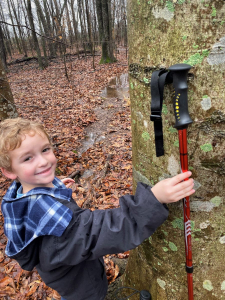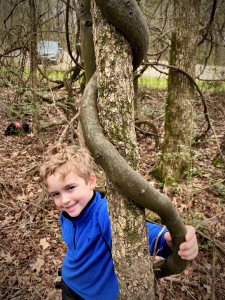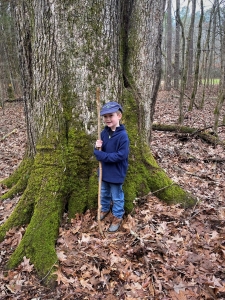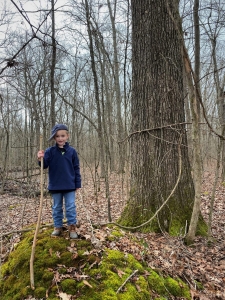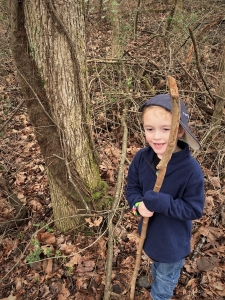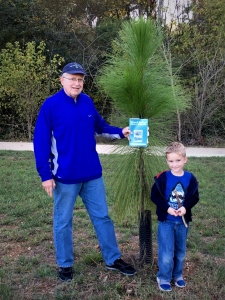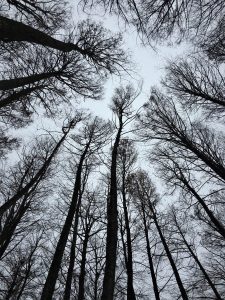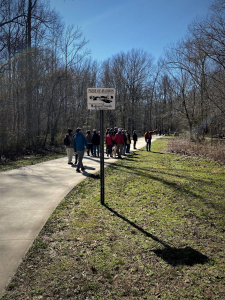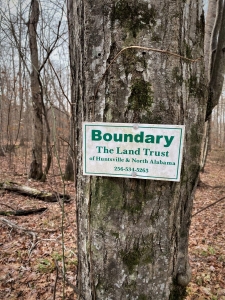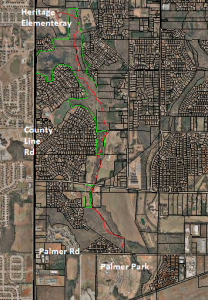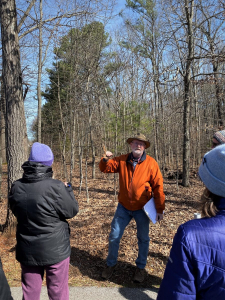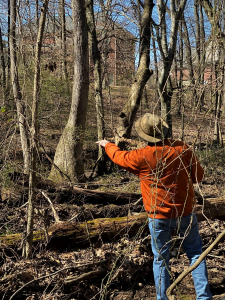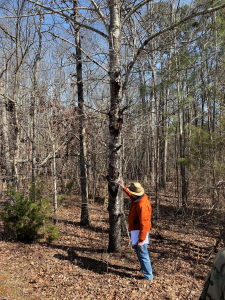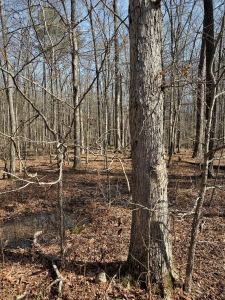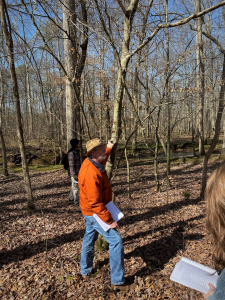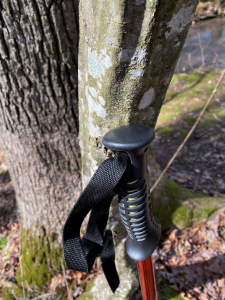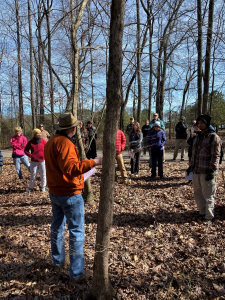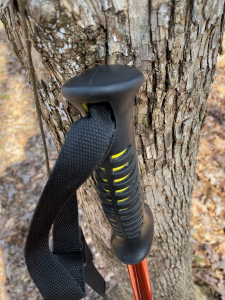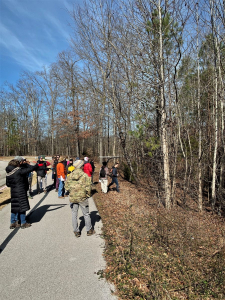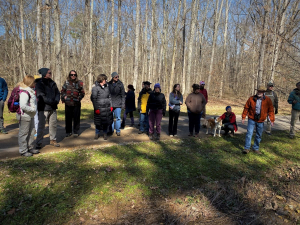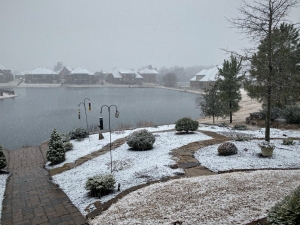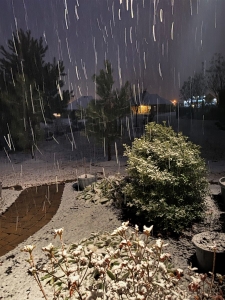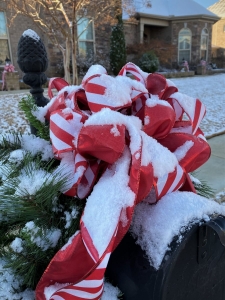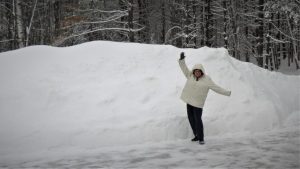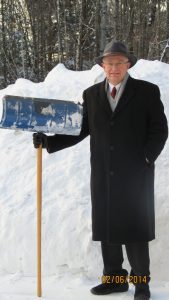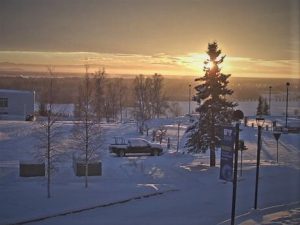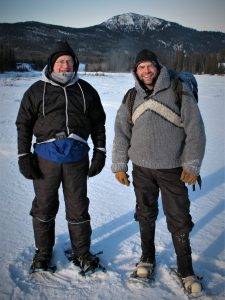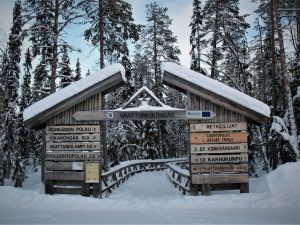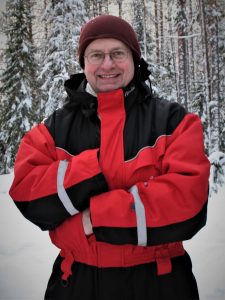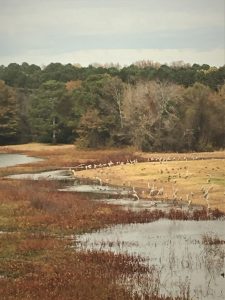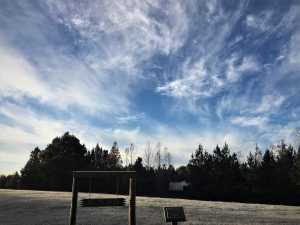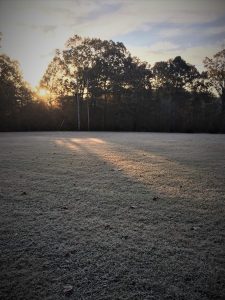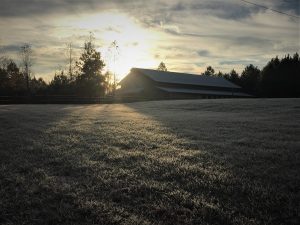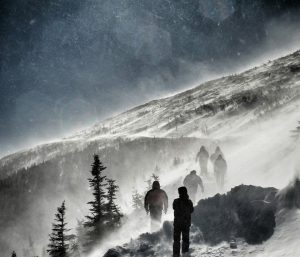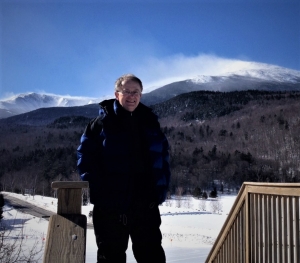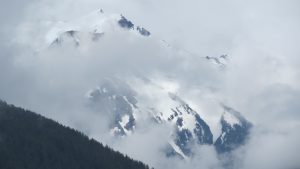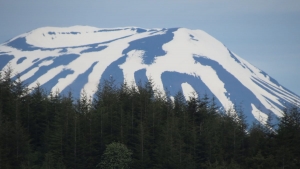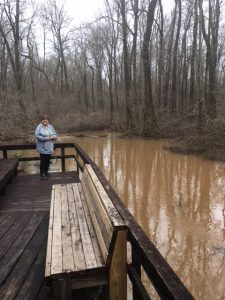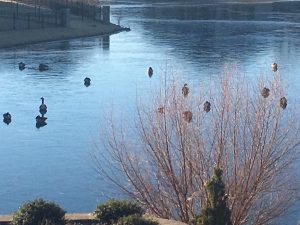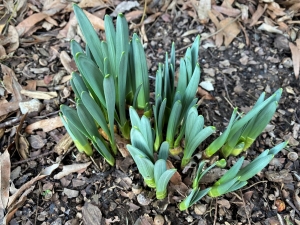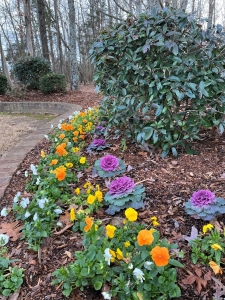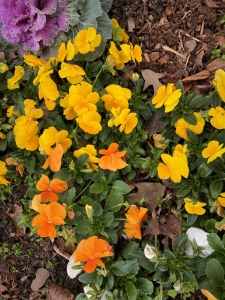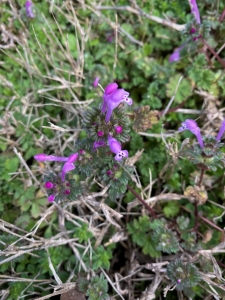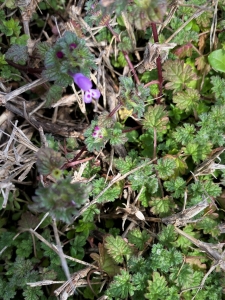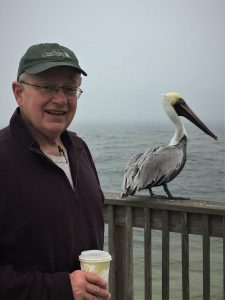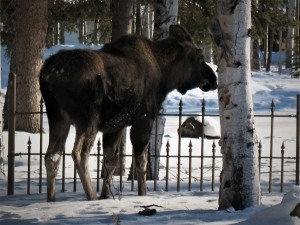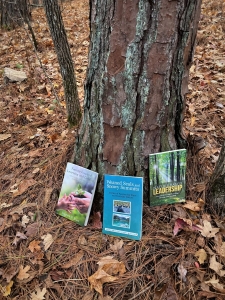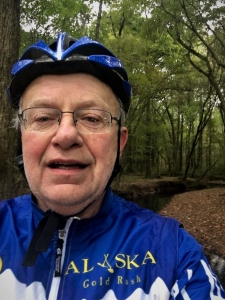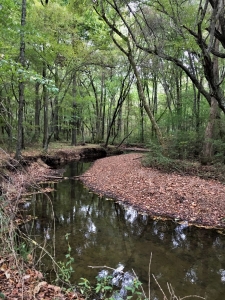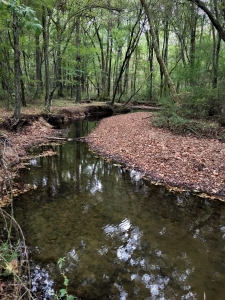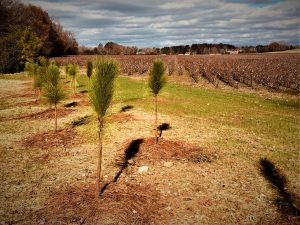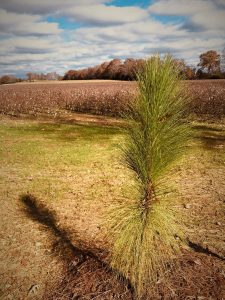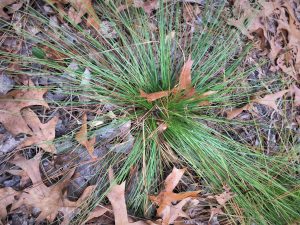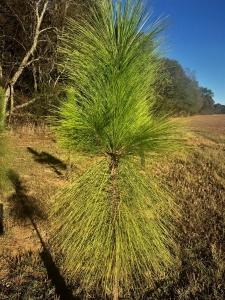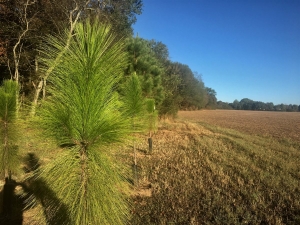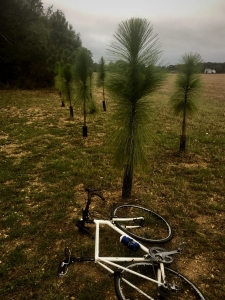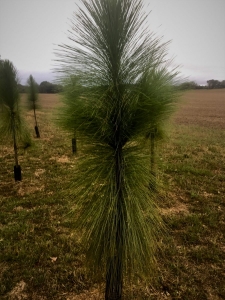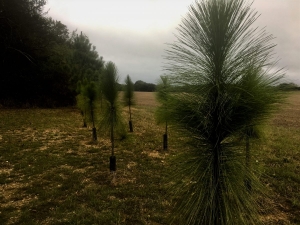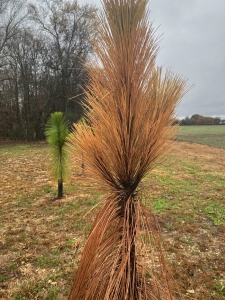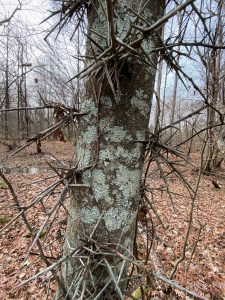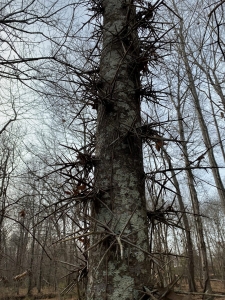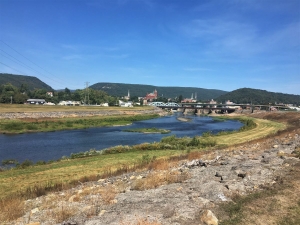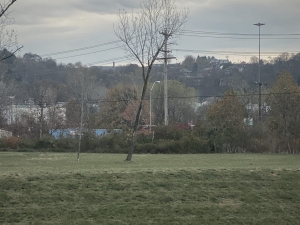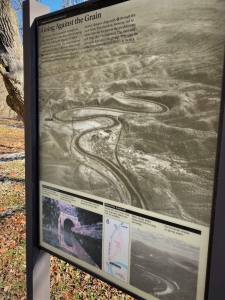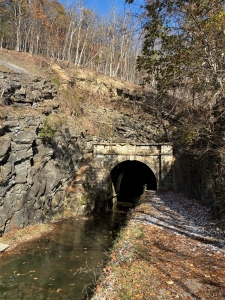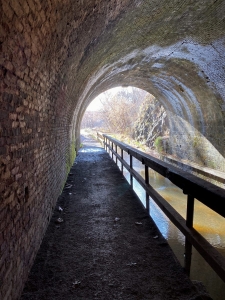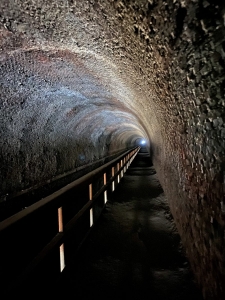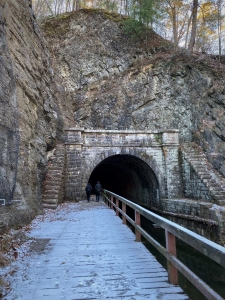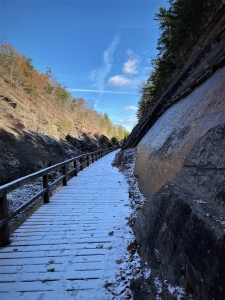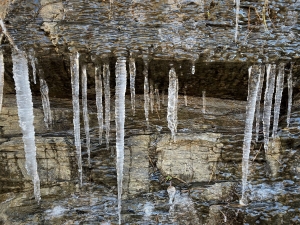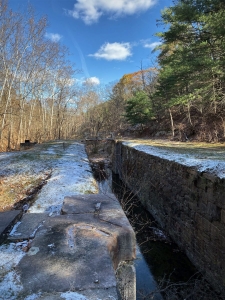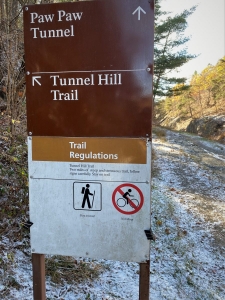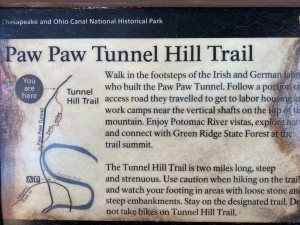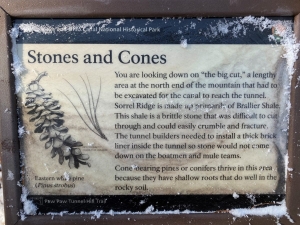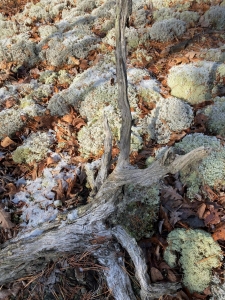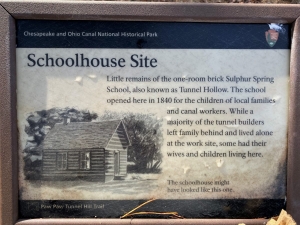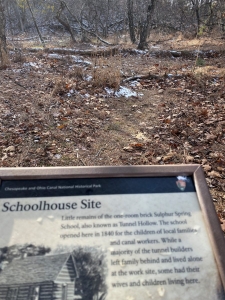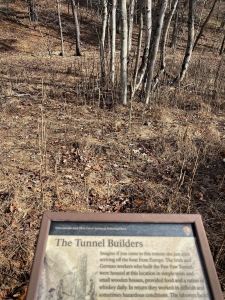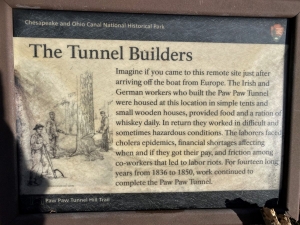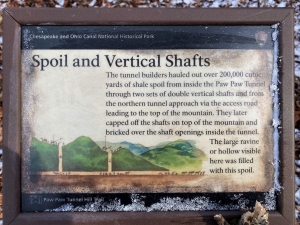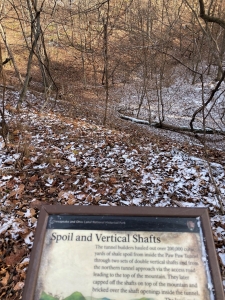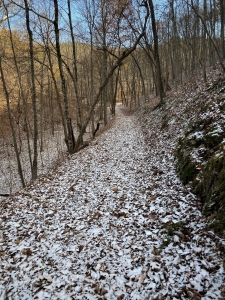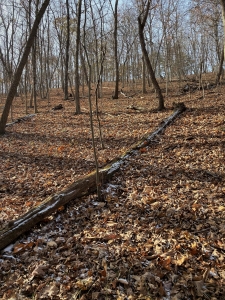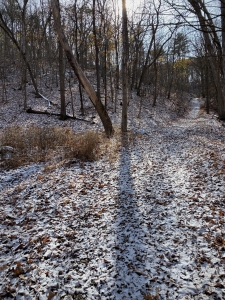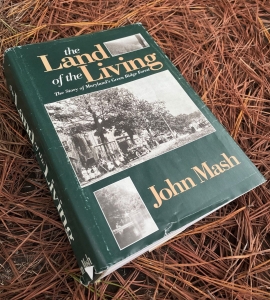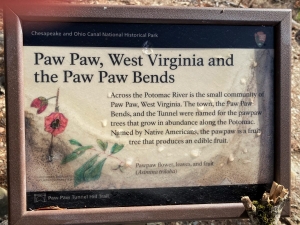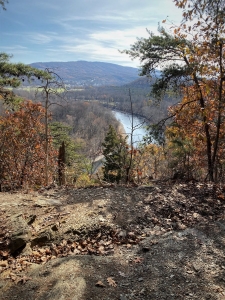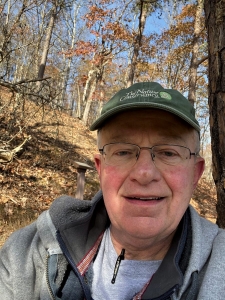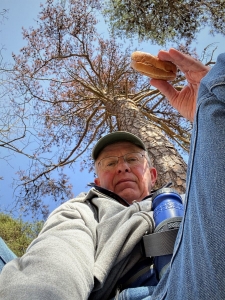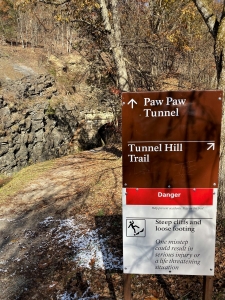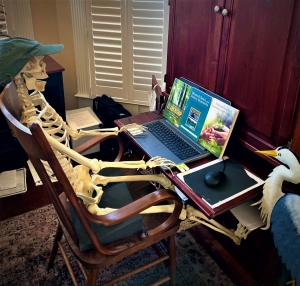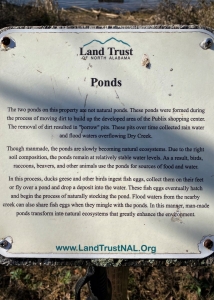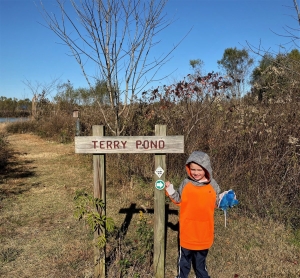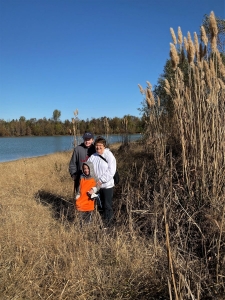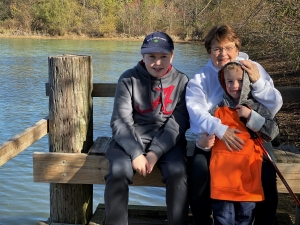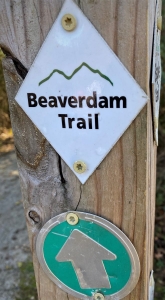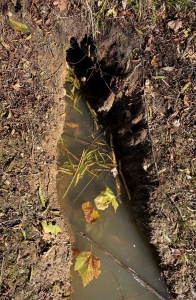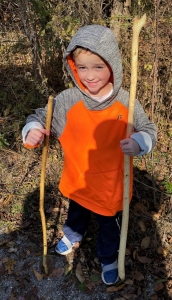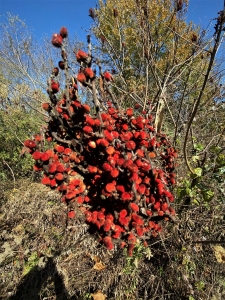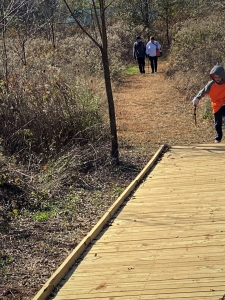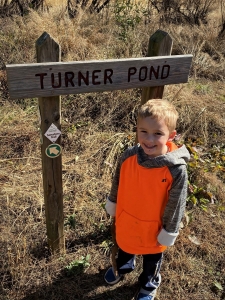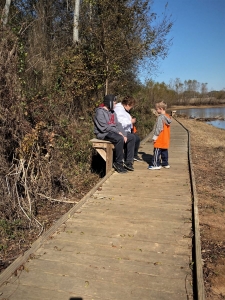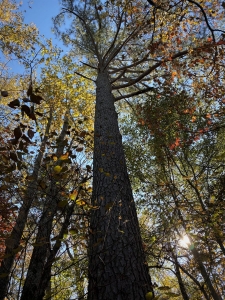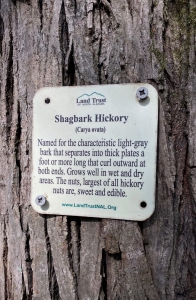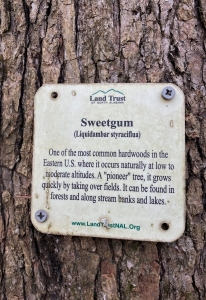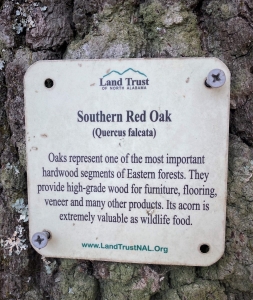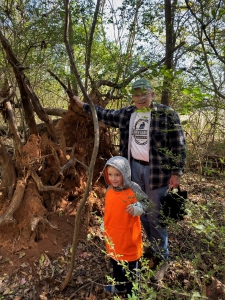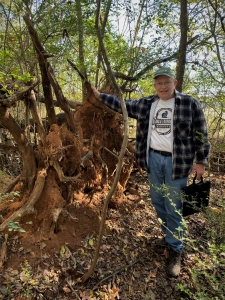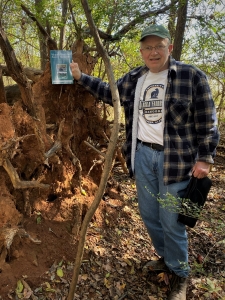Land Trust Mushroom Hike on Rainbow Mountain
Covid-19 Context
We’re now more than two weeks beyond the call to distance safely from our circle of friends, family, and associates. Judy and I speak of being under Covid-19 house-arrest. We continue our twice-daily neighborhood walks. I’m escaping as often as I can to local hiking trails and greenway bike riding. We are in the heart of spring green-up as I write this Covid-19 Context section. A sad irony that Nature’s cycle goes forward unabated by a pandemic virus that found life (and wrought disease and death) half a world away. A primitive micro-organism that has turned modern society and economy inside-out.
I subscribe to the EarthSky electronic newsletter (https://earthsky.org/). The March 31, 2020 issue reminded readers of this quote from the 3rd book of J.R.R. Tolkien’s trilogy The Lord of the Rings: “There, peeping among the cloud-wrack above a dark tor high up in the mountains, Sam saw a white star twinkle for a while. The beauty of it smote his heart, as he looked up out of the forsaken land, and hope returned to him. For like a shaft, clear and cold, the thought pierced him that in the end the Shadow was only a small and passing thing: there was light and high beauty for ever beyond its reach.” God’s green Earth…Nature…and our relationship to it is our light and high beauty… our hope.
I believe sincerely that this, too, shall pass. Already I sense a fundamental change in the world — a deepening humility, a greater recognition of our human frailty, and perhaps a strengthened belief in our oneness. I can’t speak for others, but I accept my own growing spiritualism, more palpable Faith, and an even stronger sacred connection to our Earth, this pale blue orb in the vast darkness of space.
A Final Group Gathering Before Our Collective Social Distancing
March 8, 2020, just a couple days before the US declared a Covid-19 National Emergency, I participated in a Land Trust of North Alabama Mushroom Hike at Rainbow Mountain Nature Preserve in Madison, Alabama: https://www.landtrustnal.org/properties/rainbow-mountain-preserve/ I’ve been a tree guy since entering my undergraduate forestry studies in 1969. I’ve known since those early days that a forest is far more than a collection of trees. Yes, a forest includes the trees, as well as the complex community of biotic and abiotic elements composing the forest ecosystem. Practicing industrial forestry (managing forests for a Fortune-500 Paper and Allied Products Manufacturing company) for 12 years, I focused principally on trees. Yet I retained an abiding interest in the total forest community.
I have never lost my love and enthusiasm for spring wildflowers… wherever we’ve lived along our journey across 47 years and 13 interstate moves. You’ll see a few wildflowers I photographed on the mushroom foray in a section to follow.
Among my favorite courses during my forestry studies: forest pathology, the study of forest diseases and disorders. The vast majority of villains are fungi, including notable nasties like chestnut blight, dutch elm disease, oak wilt, beech bark disease, white pine blister rust, fusiform rust, and other forest deplorables. I wrote about such forest pandemics relative to Covid-19 in my March 19, 2020 Post: https://stevejonesgbh.com/2020/03/19/lyrical-expressions-in-forest-pathogens-under-a-covid-19-cloud/
However, most forest fungal denizens are not pathogenic. Instead, they are saprophytes feeding upon dead woody material. I want to know them better for a set of important reasons:
- They are ubiquitous
- I see their fruiting bodies (mushrooms) high on the trunks of standing snags and on dead and down woody branches and logs, and reaching up from mycelia in the soil
- Some of the mushrooms are edible — the couple that I know are delectable, even if sparsely represented
- I want to forage for others fit for my frying pan
We started our hike at the Rainbow Mountain Nature Preserve trailhead atop 1,100-foot Rainbow Mountain, led by Matt Shaw (yellow/green shirt). Polypore fruiting bodies (at least two species) evidence that the responsible fungi’s hyphae and mycelia are hard at work decomposing oak tissue. Fungi, bacteria, and insects act as principal agents to assure “ashes to ashes, dust to dust” in the forest ecosystem’s cycle of life and death. The twenty or so hike participants (below right) enjoyed a perfect spring day, chilly at the outset and warming comfortably as we trekked down to about 760 feet and returned. Hard to imagine from our hike and these photos that we are surrounded by urban development of both Madison and Huntsville, AL. Thank goodness for the Land Trust and the wisdom of citizens and leaders to protect and preserve this wildness.
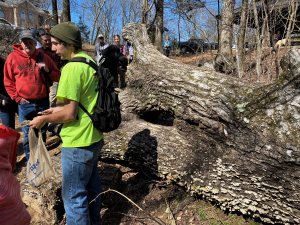
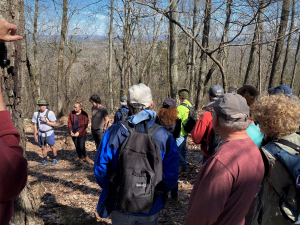
As we began our descent we hiked along limestone walls bedecked with lichens and mosses, non-flowering plants that flourish on every surface in our humid climate. Our tour guide focused on the place and role of fungi in our forests, but did not shy away from discussing the total ecosystem, of which lichens and mosses occupy major ecological niches. The old saw, “Nature abhors a vacuum,” seems to hold true… the non-flowering plants occupy every surface.
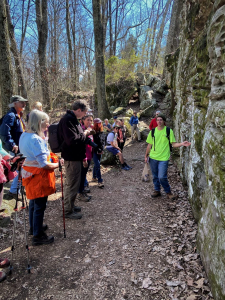

Mycorhizal Fungi
Our fungi are not limited to pathogens and saprophytes. We explored the critical function of another major subset to the associated living community — mycorhizal fungi, which are represented in tremendous mass below ground. Mycorhizae are fungi in symbiotic relationship with trees, intimately interconnected with the tree’s fine roots, multiplying many fold the trees’ absorptive capacity for both moisture and nutrients. So much in Nature is hidden from view. Here is an excellent explanation of these essential tree partners from an NRCS-USDA website:
Within the last 20 or 30 years, there has been a growing awareness that most vascular plants could not grow and reproduce successfully without the assistance provided by networks of fungi in the soil. This association between plant and fungus is called mycorrhiza (plural: mycorrhizae). In most instances, the relationship is mutualistic (symbiotic). The plant provides sugars and carbohydrates to the fungus and in return the fungus uses its branched, threadlike hyphae (mycelium) to gather water, minerals, and nutrients for the plant. Mycorrhizal fungi greatly expand the reach of the plant’s root systems and are especially important in helping them gather non-mobile nutrients such as phosphorus. These fungi have also been found to serve a protective role for their associated plants; they can reduce plant uptake of heavy metals and salts that may be present in the soil. Many also help protect plants from certain diseases and
insects. Scientists believe that it was mycorrhizal fungi that allowed ancient vascular plants to populate the land. Of the current plant families, 95% include species that either associate beneficially with or are absolutely dependent on mycorrhizal fungi for their survival.
I have often observed that as citizens and leaders we must first see the invisible before we can perform the impossible. Now that we see the invisible below ground partner, we can appreciate and understand how trees perform the impossible task of gathering soil sustenance from their limited actual root hair capacity. The NRCS-USDA website sums up the effect beautifully:
Because we cannot easily see mycorrhizal fungi, we tend to overlook their significance. Their presence in the soil is vitally important to the growth of most plants on our planet. They also perform a critical function in building soil structure and sequestering carbon. Therefore, we need to begin thinking about how what we do to the soil, for example tillage, affects these almost imperceptible fungal systems.
I find a universal truth in the first sentence of that excerpted paragraph… pertaining to all life and living: we tend to overlook (or even ignore) the significance of what we mere humans cannot easily see. We rush headlong through our days oblivious to what escapes our shallow knowledge and myopic vision. I hold steadfast to my belief that every lesson for living, learning, leading, and serving is either written indelibly in or is powerfully inspired by Nature. Also applicable with this example is my admonition that five core verbs are essential to learning from Nature. From my stevejonesgbh.com website:
Five Essential Verbs: Believe, Look, See, Feel, and Act.
- I find Nature’s Lessons because I know they lie hidden within view — belief enables me to look and see
- Really look, with eyes open to your surroundings, external to electronic devices and the distractions of meaningless noise and data
- Be alert to see deeply, beyond the superficial
- See clearly, with comprehension, to find meaning and evoke feelings
- Feel emphatically enough to spur action
Ubiquitous Fungi
The large ash (Fraxinus spp) below certainly grew luxuriously because friendly fungi shared the cause of mutual thriving. The ash now stands recently deceased (or close to death; I could not discern for certain whether some of the crown would yet produce leaves this spring). I don’t believe this individual is an early victim of the emerald ash borer, an introduced pest racing southward, decimating one of our major native commercial forest species. When I drove north in November 2019, the killing front had reached nearly midway between Knoxville and Chattanooga. A sad epidemic to this forester who revered the tall, straight boles of Appalachian cove-site ash, coveted the feel of a Louisville Slugger, and cherished the easy-split and clean burn of ash firewood.
We stopped at this point to observe the cracked-cap bracket fungus clinging about 20 feet above ground. Rather than the emerald ash borer, I believe that this specimen is dying the slow but certain death of a serious and pervasive heart rot, a woody decay fungus. The visible bracket is the fruiting body (mushroom) of the fungus. Like all living organisms, this fungi seeks to reach into the future, sending spores to infect its next host. I won’t hazard a guess at the fungal species. The closest I dare go is to deem it a polypore. Let this serve as a reminder that the cycle of life and death is continuous. What matters most is that the ecosystem persists beyond the demise of individuals. One hundred years ago other ash trees likely stood nearby, dropping the seed that produced this individual. Because we don’t know whether this tree is male or female (that’s right, ash are dioecious; two houses, male and female flowers on separate trees), it may not have produced seed. If not, the plan is that its pollen fertilized a female flower that dropped seeds for its successor generation. Again, life goes forward.
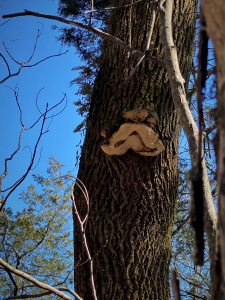
This red oak (Quercus spp) snag is loaded with desiccating polypore mushrooms. Their associated mycelia are hard at work reducing wood to soil supplement.
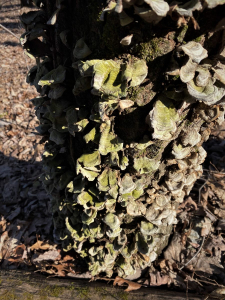
I recall my mother occasionally admonishing me for speaking about things for which I had too little knowledge, foolishly offering a too-shallow opinion. She would say, “You know just enough to be dangerous.” With respect to our fungal forest associates, I don’t even reach that threshold. The three-inch branch below, wedged between a supple jack vine and a sweetgum sapling, wears a whitish coat of what felt like a spongy layer of fungal mycelia. Our tour guide did not disagree. Its identity awaits my learning more. My only certainty — it, too, is another decomposer, transitioning death back to the assembly line of life.
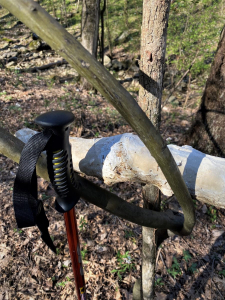
Our tour leader suggested this reference for those of us wishing to assist our learning. It’s now on my wish list!
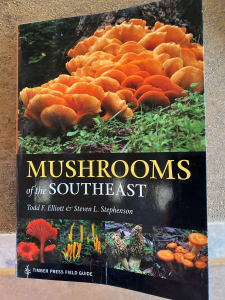
Regionally more relevant than my own reference book, which I have as a result of being so mobile over the years.

Ah, this stage of life — so much to learn in this time of knowing enough to know that my understanding and knowledge are shallow at best.
Venturing Beyond the Non-Flowering Plants
We’ve been examining fungi and other non-flowering plants. Now let’s visit with a non-photosynthesizing (achlorophyllous) parasitic plant. Meet American cancer-root (Conopholis americana), nurturing on the roots of oak and beech. Other common names are squawroot and bear corn, either of which is a more pleasant moniker. I suppose this odd plant cares little what name we give it. We found two clusters as we descended Rainbow Mountain. I recall seeing my first squawroot when I worked undergraduate summers on the Savage River State Forest. Imagine the wonder of finding squawroot on a magical Appalachian Mountain forest bearing a name that included Savage! Fact is, I felt absolute continuing beauty, magic, wonder, and awe during every moment of those two summers. Five decades later, the memory and lift remain within my being… mind, heart, and soul. Amazing what Nature has gifted me across my time’s travel. I suppose there is some level of irony in a non-photosynthesizing (achlorophyllous) parasitic plant transporting me fifty years back in time! I wish such pleasant memories and flashbacks for all who trek Nature’s paths.
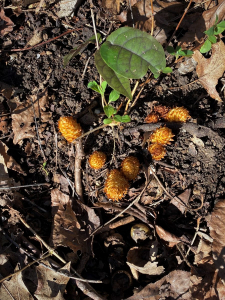
Nearby we met little sweet Betsy (Trillium cuneatum), just hours from full-flower. Other common names for this beauty include: whip-poor-will flower, large toadshade, and bloody butcher. No question which of those monikers I would choose to ignore! I believe that little sweet Betsy would agree.
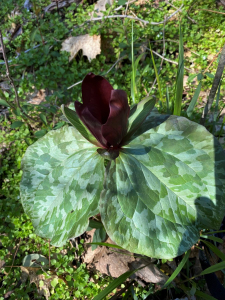
I wanted to make this be rue anemone (Thalictrum thalictroides), but I’ve never seen that species without its delicate stem leaves just under the flowers. So, I stayed with sharp-lobed hepatica (Hepatica acutiloba), whose basal leaves are often well-hidden under the prior autumn’s leaf litter. I should have lingered long enough to remove enough fall detritus to confirm the hepatica’s basal leaves. Both species grace us with their creamy white blossoms long before overstory leaf-out. How can we not be grateful for such a gift?!
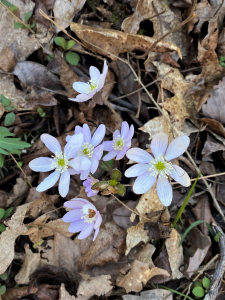
Our world is far too small to expect only native plants. We found leatherleaf mahonia (Berberis bealei), native to China, this one within a day or two of full flower. Escaped from ornamental plantings, leatherleaf mahonia is far less aggressive than our ever-present invasive privet. I don’t despair over its glossy evergreen leaves, nor its early spring flowers and blue late summer berries. I know, I am expected by native plant purists to disdain its invasive presence. I just can’t do it — forgive me.
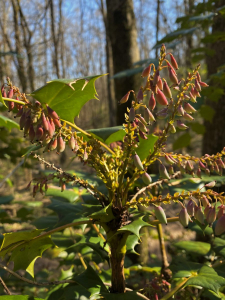
Non-plant Frames
Here’s the pleasant view from the falls at the lower end of the hike. Already, the privet (a nasty invasive) is greening the understory. I wonder how much longer until privet captures the entire site, reducing the number and variety of spring ephemerals, and ultimately limiting regeneration of native tree species. I shudder to think that 100 years hence the spring itself will be bordered only by privet shrubs.
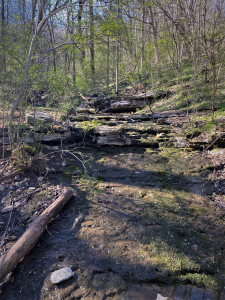
For the present, I felt great joy in having this several-hundred acre touch of Nature just three miles from my door. As I ascended the trail back to the hilltop parking area, I felt confident that the same citizen-naturalist force that preserved and protected this within-urban gem will devise a privet-control plan of attack.
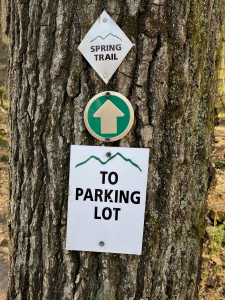
I pay yet another tribute to the Land Trust of North Alabama: https://www.landtrustnal.org/ Find your own local Land Trust. Engage to do your part for the next generation!
Thoughts and Reflections
I wrote my books Nature Based Leadership (2016), Nature-Inspired Learning and Leading (2017), and Weaned Seals and Snowy Summits: Stories of Passion for Place and Everyday Nature (2019; co-authored with Dr. Jennifer Wilhoit) to encourage all citizens to recognize and appreciate that every lesson for living, learning, serving, and leading is either written indelibly in or is powerfully inspired by Nature. All three are available on Amazon and other online sources.
Here are the three succinct truths I draw from this Blog Post:
- Much of what is a forest lies hidden from view
- Nature’s power to lift us and heal us, physically and of the soul, is unlimited
- Learning more enables and inspires us to do more — changing some small corner of wildness for the better
Inhale and absorb Nature’s elixir. May Nature Inspire, Reward, and Heal you!
Note: All blog post images created & photographed by Stephen B. Jones unless otherwise noted. Please circulate images with photo credit: “©2020 Steve Jones, Great Blue Heron LLC. All Rights Reserved.”
Another Note: If you came to this post via a Facebook posting or by an another route, please sign up now (no cost… no obligation) to receive my Blog Post email alerts: https://stevejonesgbh.com/contact/
And a Third: I am available for Nature-Inspired Speaking, Writing, and Consulting — contact me at steve.jones.0524@gmail.com
Reminder of my Personal and Professional Purpose, Passion, and Cause
If only more of us viewed our precious environment through the filters I employ. If only my mission and vision could be multiplied untold orders of magnitude:
Mission: Employ writing and speaking to educate, inspire, and enable readers and listeners to understand, appreciate, and enjoy Nature… and accept and practice Earth Stewardship.
Vision:
- People of all ages will pay greater attention to and engage more regularly with Nature… and will accept and practice informed and responsible Earth Stewardship.
- They will see their relationship to our natural world with new eyes… and will understand more clearly their Earth home.
Tagline/Motto: Steve (Great Blue Heron) encourages and seeks a better tomorrow through Nature-Inspired Living!
Steve’s Three Books
I began writing books and Posts for several reasons:
- I love hiking and exploring in Nature
- I see images I want to (and do) capture with my trusty iPhone camera
- I enjoy explaining those images — an educator at heart
- I don’t play golf!
- I actually do love writing — it’s the hobby I never needed when my career consumed me
- Judy suggested my writing is in large measure my legacy to our two kids, our five grand kids, and all the unborn generations beyond
- And finally, perhaps my books and Blogs could reach beyond family and touch a few others lives… sow some seeds for the future

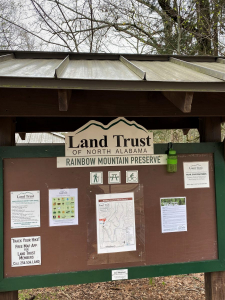
All three of my books (Nature Based Leadership; Nature-Inspired Learning and Leading; Weaned Seals and Snowy Summits) present compilations of personal experiences expressing my (and co-author Dr. Wilhoit for Weaned Seals and Snowy Summits) deep passion for Nature. All three books offer observations and reflections on my relationship to the natural world… and the broader implications for society. Order any and all from your local indie bookstore, or find them on IndieBound or other online sources such as Amazon and LifeRich.

